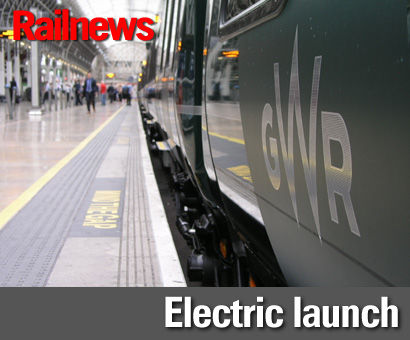ELECTRIC GWR trains have started running for the first time.
GWR said four Bombardier Electrostar sets running as two eight-car formations launched the service between London Paddington and Hayes & Harlington today, with the first train leaving Paddington at 07.15. The inaugural up service left Hayes three minutes later.
The launch marks a notable landmark in the often controversial project to electrify the Great Western Main Line, although the first electric trains are relying on overhead equipment which was installed almost 20 years ago for Heathrow Express. There are hopes that the new electric services can be extended to Maidenhead and then on to Reading by 2017, which is also set to become the western terminus of the Elizabeth line the following year.
The section from Reading to Didcot has already been energised for testing new Hitachi Intercity Expresses, and installation of an overhead 'conductor rail' through the Severn Tunnel is due to start next week. Trains between London and South Wales will then be diverted via Gloucester until late October while the tunnel is closed.
GWR said the first Class 387 Electrostars, which have been built at Derby, will provide an additional 1,400 seats between Hayes and Paddington at the busiest times. Another 41 four-car sets will join them over time, gradually displacing the three-car Class 165 diesel units which have been running on Thames Valley routes since the early 1990s.
GWR managing director Mark Hopwood said: “The Thames Valley is one of the most popular rail corridors in the UK. We have promised the current fleet would be upgraded to provide much needed additional capacity and faster journey times."
The 387s are similar to those which have been in service on Thameslink since early 2015. 387s are also being introduced on Gatwick Express and c2c. The Electrostars, which will be the last of the type to be built, have power sockets, air conditioning and free WiFi. They will able to run on GWR routes in four, eight or 12-car formations.
GWR said the diesel Turbos will be cascaded further west, where they will displace Class 158s on routes between South Wales, Bristol and Southampton. The 158s, in turn, will move to Devon and Cornwall.


